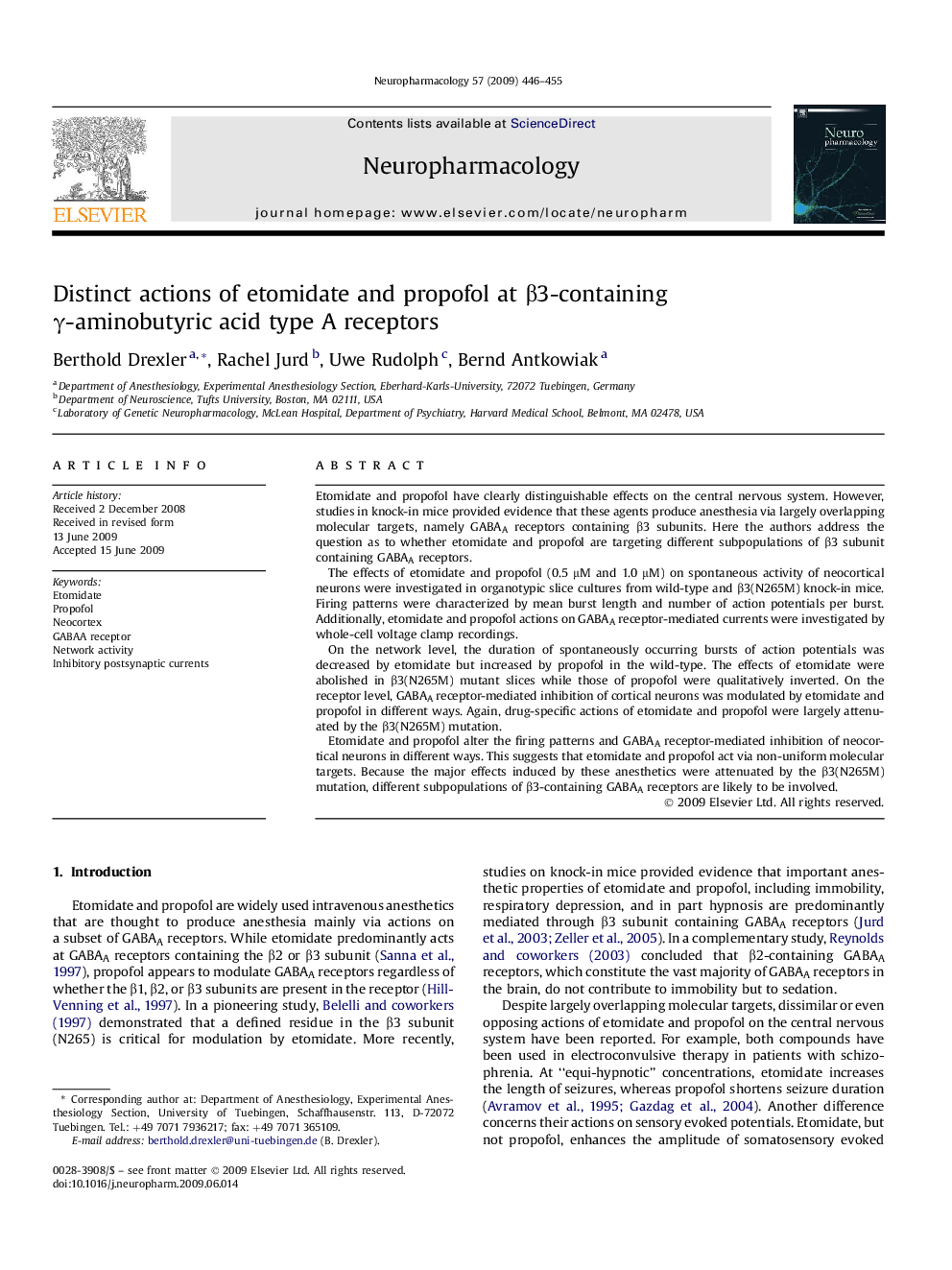| Article ID | Journal | Published Year | Pages | File Type |
|---|---|---|---|---|
| 2494039 | Neuropharmacology | 2009 | 10 Pages |
Etomidate and propofol have clearly distinguishable effects on the central nervous system. However, studies in knock-in mice provided evidence that these agents produce anesthesia via largely overlapping molecular targets, namely GABAA receptors containing β3 subunits. Here the authors address the question as to whether etomidate and propofol are targeting different subpopulations of β3 subunit containing GABAA receptors.The effects of etomidate and propofol (0.5 μM and 1.0 μM) on spontaneous activity of neocortical neurons were investigated in organotypic slice cultures from wild-type and β3(N265M) knock-in mice. Firing patterns were characterized by mean burst length and number of action potentials per burst. Additionally, etomidate and propofol actions on GABAA receptor-mediated currents were investigated by whole-cell voltage clamp recordings.On the network level, the duration of spontaneously occurring bursts of action potentials was decreased by etomidate but increased by propofol in the wild-type. The effects of etomidate were abolished in β3(N265M) mutant slices while those of propofol were qualitatively inverted. On the receptor level, GABAA receptor-mediated inhibition of cortical neurons was modulated by etomidate and propofol in different ways. Again, drug-specific actions of etomidate and propofol were largely attenuated by the β3(N265M) mutation.Etomidate and propofol alter the firing patterns and GABAA receptor-mediated inhibition of neocortical neurons in different ways. This suggests that etomidate and propofol act via non-uniform molecular targets. Because the major effects induced by these anesthetics were attenuated by the β3(N265M) mutation, different subpopulations of β3-containing GABAA receptors are likely to be involved.
